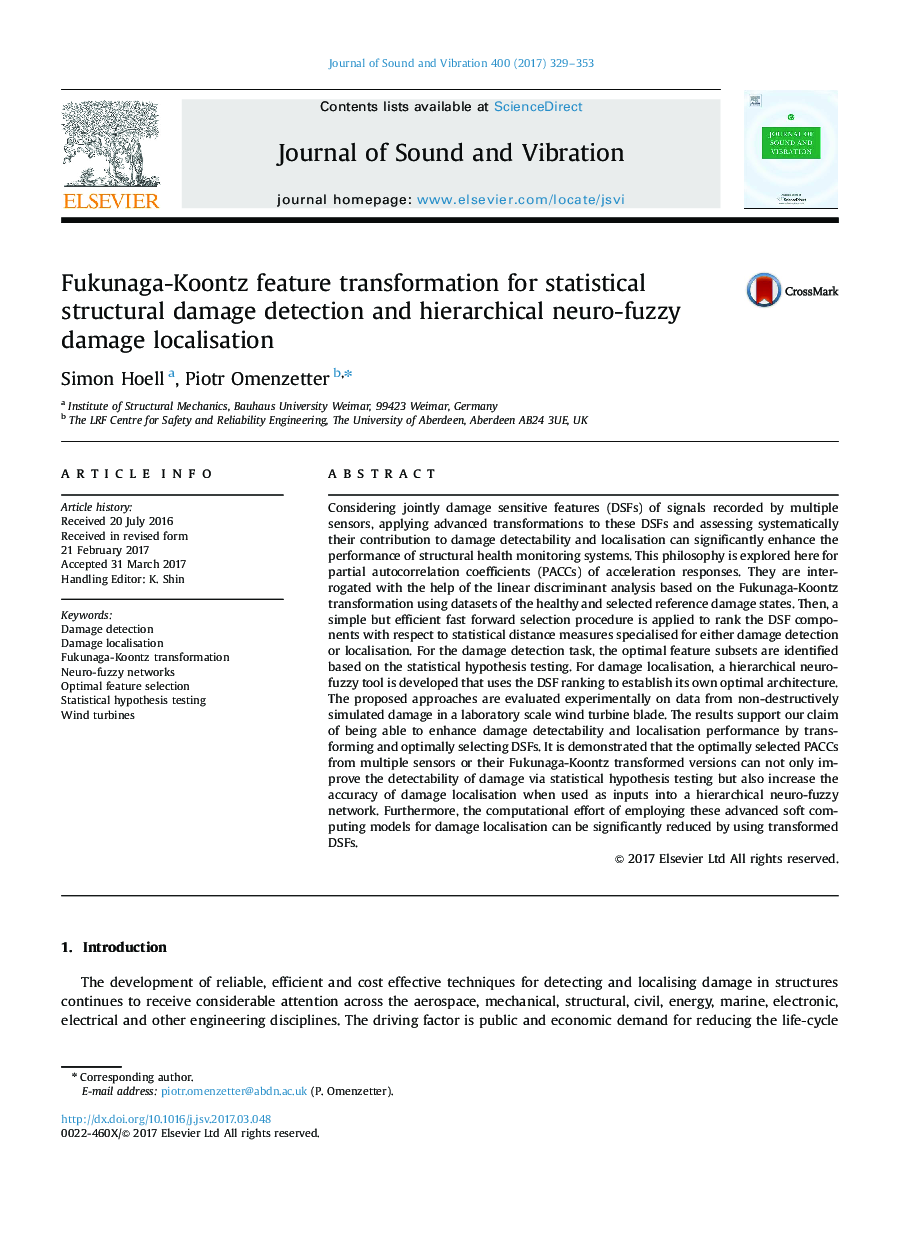| کد مقاله | کد نشریه | سال انتشار | مقاله انگلیسی | نسخه تمام متن |
|---|---|---|---|---|
| 4923986 | 1430833 | 2017 | 25 صفحه PDF | دانلود رایگان |
عنوان انگلیسی مقاله ISI
Fukunaga-Koontz feature transformation for statistical structural damage detection and hierarchical neuro-fuzzy damage localisation
دانلود مقاله + سفارش ترجمه
دانلود مقاله ISI انگلیسی
رایگان برای ایرانیان
کلمات کلیدی
موضوعات مرتبط
مهندسی و علوم پایه
سایر رشته های مهندسی
مهندسی عمران و سازه
پیش نمایش صفحه اول مقاله

چکیده انگلیسی
Considering jointly damage sensitive features (DSFs) of signals recorded by multiple sensors, applying advanced transformations to these DSFs and assessing systematically their contribution to damage detectability and localisation can significantly enhance the performance of structural health monitoring systems. This philosophy is explored here for partial autocorrelation coefficients (PACCs) of acceleration responses. They are interrogated with the help of the linear discriminant analysis based on the Fukunaga-Koontz transformation using datasets of the healthy and selected reference damage states. Then, a simple but efficient fast forward selection procedure is applied to rank the DSF components with respect to statistical distance measures specialised for either damage detection or localisation. For the damage detection task, the optimal feature subsets are identified based on the statistical hypothesis testing. For damage localisation, a hierarchical neuro-fuzzy tool is developed that uses the DSF ranking to establish its own optimal architecture. The proposed approaches are evaluated experimentally on data from non-destructively simulated damage in a laboratory scale wind turbine blade. The results support our claim of being able to enhance damage detectability and localisation performance by transforming and optimally selecting DSFs. It is demonstrated that the optimally selected PACCs from multiple sensors or their Fukunaga-Koontz transformed versions can not only improve the detectability of damage via statistical hypothesis testing but also increase the accuracy of damage localisation when used as inputs into a hierarchical neuro-fuzzy network. Furthermore, the computational effort of employing these advanced soft computing models for damage localisation can be significantly reduced by using transformed DSFs.
ناشر
Database: Elsevier - ScienceDirect (ساینس دایرکت)
Journal: Journal of Sound and Vibration - Volume 400, 21 July 2017, Pages 329-353
Journal: Journal of Sound and Vibration - Volume 400, 21 July 2017, Pages 329-353
نویسندگان
Simon Hoell, Piotr Omenzetter,